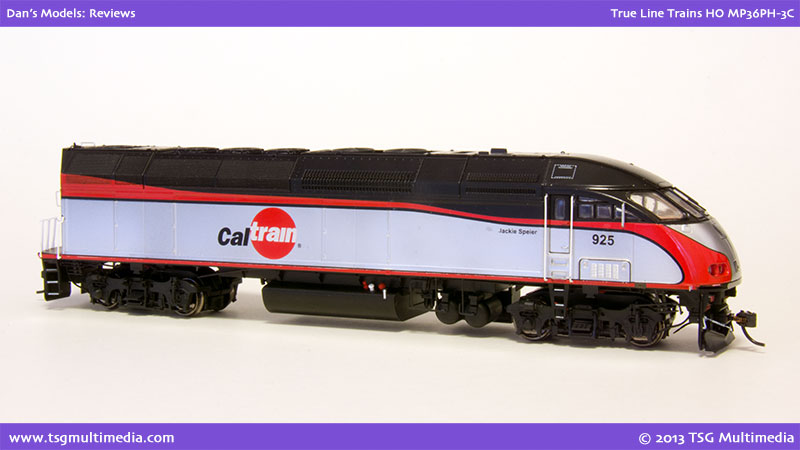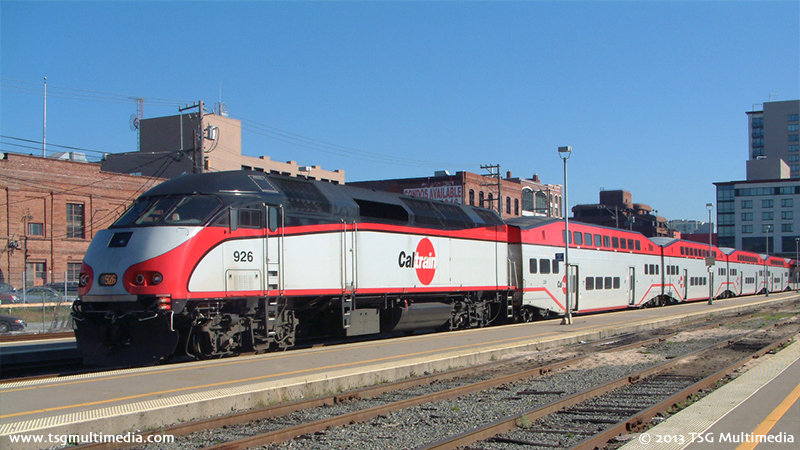True Line Trains MP36PH-3C
Ever since True Line Trains announced that they would be producing an HO scale MP36 in Caltrain colors, I have been eagerly awaiting the delivery of this model. I finally got one and… well, to say it was a major disappointment would be an understatement. I wanted to like this model. I really did.
The first and most glaring issue is the paint job. The red and black are fine but the rest of the model is silver! I have lived in the San Francisco bay area my entire life and currently reside about a block from the Caltrain line. I see these things all the time. They are not and never have been painted silver. The color is a very pale gray that looks almost white in bright sunlight.
True, Caltrain’s F40s are silver, but those are different locomotives with an entirely different paint scheme. I am still amazed that a company that says it has prototypical paint schemes could make such an obvious mistake. There are hundreds of photos of these things on the internet, after all.
The silver paint on the True Line Trains model was very thick and slightly uneven, not what I’d expect in an expensive model. I happened to have an Athearn Genesis Santa Fe F7 on my workbench and the silver on that model is perfectly smooth and thin.
Aside from that, the Caltrain logo on the fireman’s side is incorrectly rendered, with the “Cal” and “Train” at separate levels. Oddly enough, they got that part right on the other side. The above photo taken in San Francisco in 2005 shows what a Caltrain MP36 is supposed to look like.
There are other discrepancies as well. Detail wise, the model more closely matches a GO transit MP40PH. The fuel tank and underside details are in the wrong places for an MP36. Since True Line Trains is a Canadian company, I can understand why they would base their model on a GO transit locomotive. Still, given that Metra, Metrolink, and several other US transit agencies also use MP36s, it would seem like good marketing to get the details right.
The model has many other small details, like rear view mirrors, but some seem a little on the chunky side.
My model came factory equipped with a LokSound DCC decoder, and it was set up so that the headlights, ditch lights, and red markers on the front were operable. The ditch lights are controlled by the F6 button, while the red markers light up when the locomotive is in reverse. It seemed to run okay when I gave it a brief test, but since I was planning to return the model I did not run it very much. The model is also very light for a locomotive comparable in size to an SD40-2.
The sound was raspy, as if the model perhaps had a blown speaker. I really wish manufacturers wouldn’t crank the default volume to 11 when they install sound in a model. Again, since I was planning to send the model back I did not tinker with the CVs to see if I could lower the volume and eliminate the distortion.
Thankfully I bought the model from a reputable online dealer and was able to return it with no problems.
It may be a longshot, as transit locomotive models aren’t everyone’s cup of tea, but I really wish someone else would make a good HO scale MP36. Kato? Are you listening?



Comments are closed.